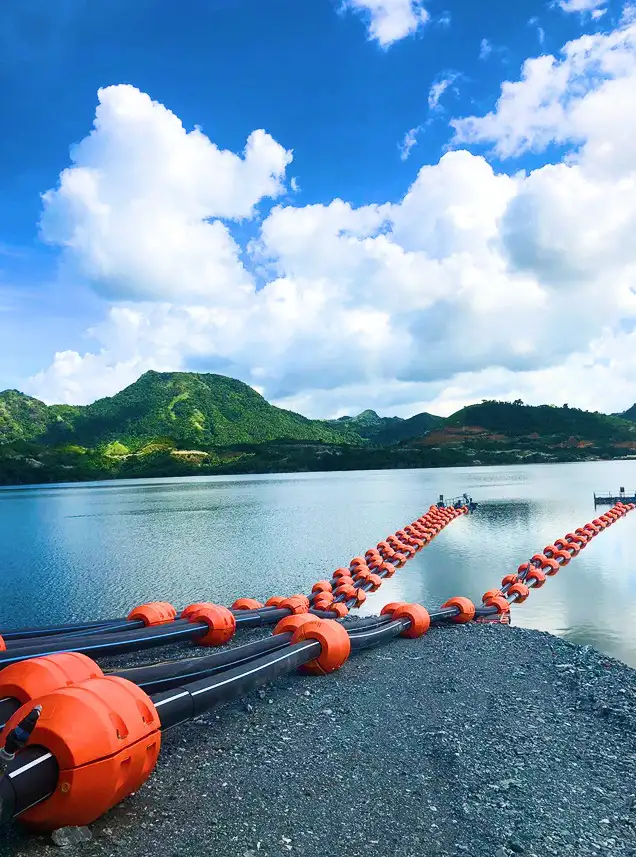Time: 2025-06-19 02:06:37 Source: Max Pipe
As a professional pipeline manufacturer, we are well aware of the importance of tailings conveying systems to the operational efficiency and environmental protection of mining companies. This article will introduce in detail the innovative application of DN300mm ultra-high molecular weight polyethylene (UHMW-PE) pipes in the field of iron ore tailings transportation from multiple dimensions such as technical characteristics, engineering cases, construction plans, and economic benefits. Through specific case analysis, it will show how this new type of wear-resistant pipe can solve the industry pain points of traditional steel pipes, such as short service life and high maintenance costs, and provide mining companies with more economical and environmentally friendly tailings conveying solutions.
Ultra-high molecular weight polyethylene (UHMW-PE) pipes, as the core components of modern tailings conveying systems, have become the preferred material in the field of iron ore tailings conveying due to their excellent wear resistance and long service life. Compared with traditional steel pipes, DN300mm UHMW-PE pipes have significant advantages in technical performance and can effectively solve the industry pain points faced by mining companies, such as low conveying efficiency and high maintenance costs.
Wear resistance is the most prominent feature of UHMW-PE pipes. Laboratory tests and actual application data show that the wear resistance of this material is 7-10 times that of carbon steel and 5-8 times that of stainless steel. In the iron ore tailings conveying environment, tailings slurry usually contains mineral particles with higher hardness such as FeCO₃ and Fe₂O₃, and the -0.074mm particle size accounts for as high as 83.16% of its particle size distribution, and the -0.037mm particle size accounts for 67.72%. Such fine hard particles cause continuous wear on the pipe wall under high-speed flow. Under such working conditions, traditional steel pipes need to be turned 180 degrees every four months on average to balance the wear, and they are completely scrapped in two years. UHMW-PE pipes can be used for 3-6 years under the same working conditions, which greatly reduces the replacement frequency and maintenance costs.
DN300mm UHMW-PE pipes also have excellent impact resistance, with an impact strength that is twice that of ordinary polyethylene (PE) and five times that of ABS plastic. This feature enables it to withstand pressure fluctuations and accidental impacts of ore blocks commonly seen in tailings conveying systems. In actual applications, even if larger particles (≤65mm) of iron ore tailings are encountered, the pipe will not rupture or be damaged. At the same time, the self-lubricating properties of the material make the friction coefficient extremely low, effectively reducing the conveying resistance and reducing the pumping energy consumption.
From the perspective of chemical stability, UHMW-PE pipes perform well. It can withstand various corrosive media and organic media within a certain temperature and concentration range, and has good tolerance to acidic or alkaline environments (pH 4-10) commonly found in iron ore tailings. Compared with metal pipes, it does not suffer from electrochemical corrosion and is not easy to scale. The inner wall can remain smooth after long-term use, ensuring that the transportation efficiency does not decrease over time.
The physical performance parameters of DN300mm UHMW-PE pipes are also impressive: tensile yield strength ≥22MPa, tensile breaking strength ≥35MPa, elongation at break 395%, density 0.935~0.950g/cm. These indicators ensure the safe operation of the pipeline under a working pressure of 1.25MPa. At the same time, its weight is only 1/8 of that of a steel pipe, which greatly reduces the difficulty of transportation and installation.
In terms of connection method, DN300mm UHMW-PE pipes are usually connected by flanges, with prefabricated steel flanges at both ends. They only need to be tightened with bolts during installation. This design simplifies on-site construction, shortens the construction period, and is also convenient for segmented replacement during later maintenance. It is worth noting that when tightening the bolts, they must be tightened symmetrically in multiple times, and one side cannot be tightened in place at one time to ensure the connection is tight and evenly stressed.
